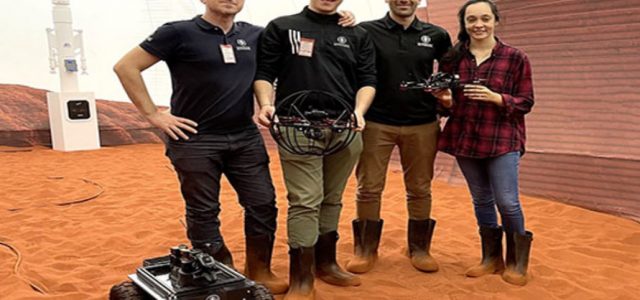Skypersonic, a subsidiary of Red Cat Holdings, Inc. announces today that it recently delivered to NASA the hardware and software for a rover and drone system that the crew members of NASA’s Simulated Mars Missions will use to remotely explore Martian-like terrain around Earth – all from their 1,700-square-foot simulated Martian habitat at the Johnson Space Center in Houston, Texas.
In the Simulated Mars Missions CHAPEA, crew members will spend one year living and working in a habitat at Johnson Space Center that has been designed and built to simulate life on the Red Planet. The Skypersonic drones and rover will be taken to an area on Earth that is similar to Martian terrain – such as a desert or mountainous region – where they will be controlled remotely by crew members in Houston. The exercise is designed to test the ability of astronauts on Mars to remotely explore the planet with drones and rovers.
The hardware and software delivered to Houston were proven in August 2022, when NASA personnel stationed at the Johnson Space Center controlled the Skypersonic drones and rover on the Martian-like environment of Mt. Etna, an active volcano thousands of miles away in Italy. Not only was the surface of the volcano like that of Mars, but there is no GPS signal on Mt. Etna, which gave NASA personnel insight into how the technology would perform on a Martian surface. Because its proprietary remote piloting technology doesn’t rely on GPS, Skypersonic allows pilots, and the drones or rovers they control, to be located virtually anywhere in the world – or out of this world.
“This recent delivery is the latest milestone in our five-year contract with NASA to provide drone and rover hardware, software, and support to the Simulated Mars Missions. We look forward to working closely with the Simulated Mars Missions crews in the coming years to develop and test the prototype of the first drones and rovers to be used by humans on Mars. The challenges are great – extremely thin atmosphere, dramatically cold temperatures, a largely unknown environment – but I am confident we will prevail and advance the science of our industry in the process,” said Skypersonic CEO Giuseppe Santangelo.
NASA personnel trained on piloting the recently delivered drones with Skypersonic’s Martian Simulator, a computer-simulation of the Martian environment based on actual photographs and video of the surface of Mars.



















